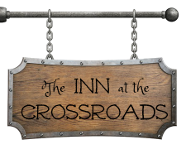“’Freshwater trout,’ announced Mihi, ‘from the Adrilankha River, stuffed with carrot slivers, fresh rosemary, salt, crushed black pepper, a sprinkling of powdered Eastern red pepper, minced garlic, and sliced lemon wedges. Accompanied by fresh goslingroot, quick-steamed in lemon butter.’ Then, wielding the serving spoons like tongs, he reverently delivered some fish and vegetable onto our plates…
I can’t tell you a lot about the trout, other than what Mihi said, except that Mr. Valabar had once let slip that it was double-wrapped in a heat-resistant parchment so that it was steam that actually cooked it. If I knew more, I’d make it myself, as best I could. A great deal of the art of Valabar’s, of course, consisted in putting astonishing amounts of effort into making sure that each ingredient was the freshest, most per-fect that could be found. It’s all in the details, just like assassination. Though with a good fish, more is at stake.“
–Dzur, by Steven Brust
Thoughts:
Delicious. Sometimes elaborate words fail me when a dish is just so wonderfully good, and this is no exception.
The fish cooks to perfection in the parchment, ending rich and tender, with not a hint of dryness. The inclusion of carrots in the stuffing threw me at first, but as usual, Brust knows his business. They, along with the rosemary, gave a bit of a textural counterpoint to the tenderness of the fish, while the lemon soaked into the whole thing, perfecting the combination of flavors. I, for one, can’t imagine a better way to enjoy trout (unless it’s wrapped in bacon…).
Recipe for Freshwater Trout
Cook’s Notes: Author Steven Brust said that he was thinking of asparagus when writing about goslingroot, so that’s what I’ve included here. I used white asparagus for the Goslingroot, since it was available, and is more visually interesting than the regular green variety (which is also tasty).
Ingredients:
- 2 whole trout
- 2 medium carrots, shredded
- 1 tsp. fresh rosemary, minced
- generous pinch of salt
- 1/2 tsp. ground black pepper
- 1/2 tsp. Aleppo pepper, or paprika
- 1 lemon, sliced thin
- 1 bunch asparagus
- 2 Tbs. butter
- juice of 1 lemon
Preheat oven to 400 degrees. Cut 2 sheets of parchment paper large enough to completely cover both fish.
In a small bowl, combine all the ingredients for the filling except the lemon. Divide equally between the two fish, and place the lemon slices on top of the filling. Wrap the fish up: bring the ends of the parchment up over and parallel to the fish. Roll the two ends together, toward the fish, then tuck the ends underneath the packaged fish. Repeat with the second sheet of parchment, wrapping it around the first parchment. Place the wrapped fish on a baking sheet and bake for 12-15 minutes.
Cut open the parchment and serve the fish immediately.
For the asparagus: fill a large sautee pan halfway with water. Turn up to a simmer, and blanch the asparagus for about 2-3 minutes. Drain, then melt the 2 Tbs. butter in the pan. Add the asparagus back into the pan, and toss with the butter. Continue to cook gently for several more minutes until the asparagus is tender. Sprinkle with lemon juice, and serve.





